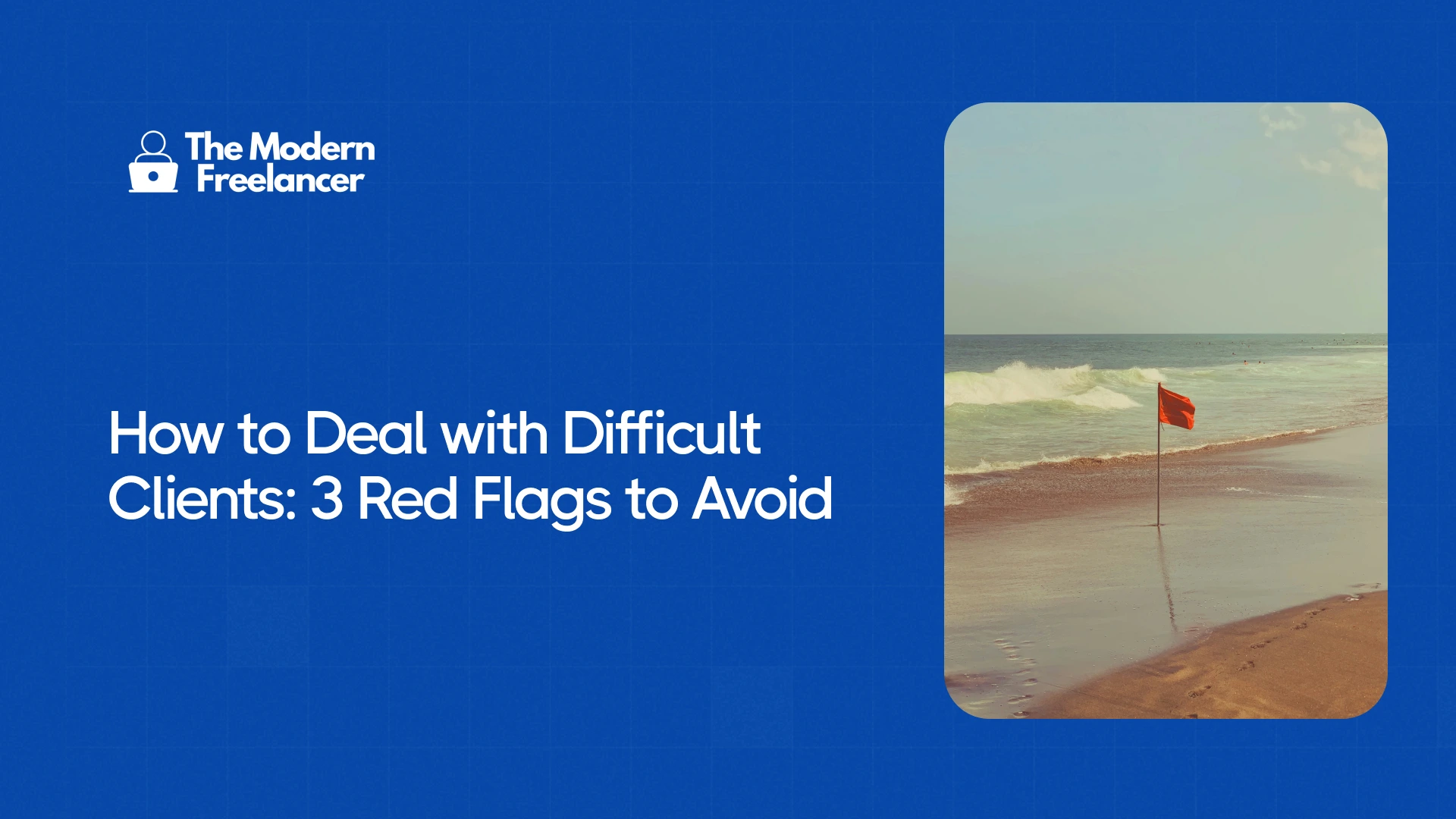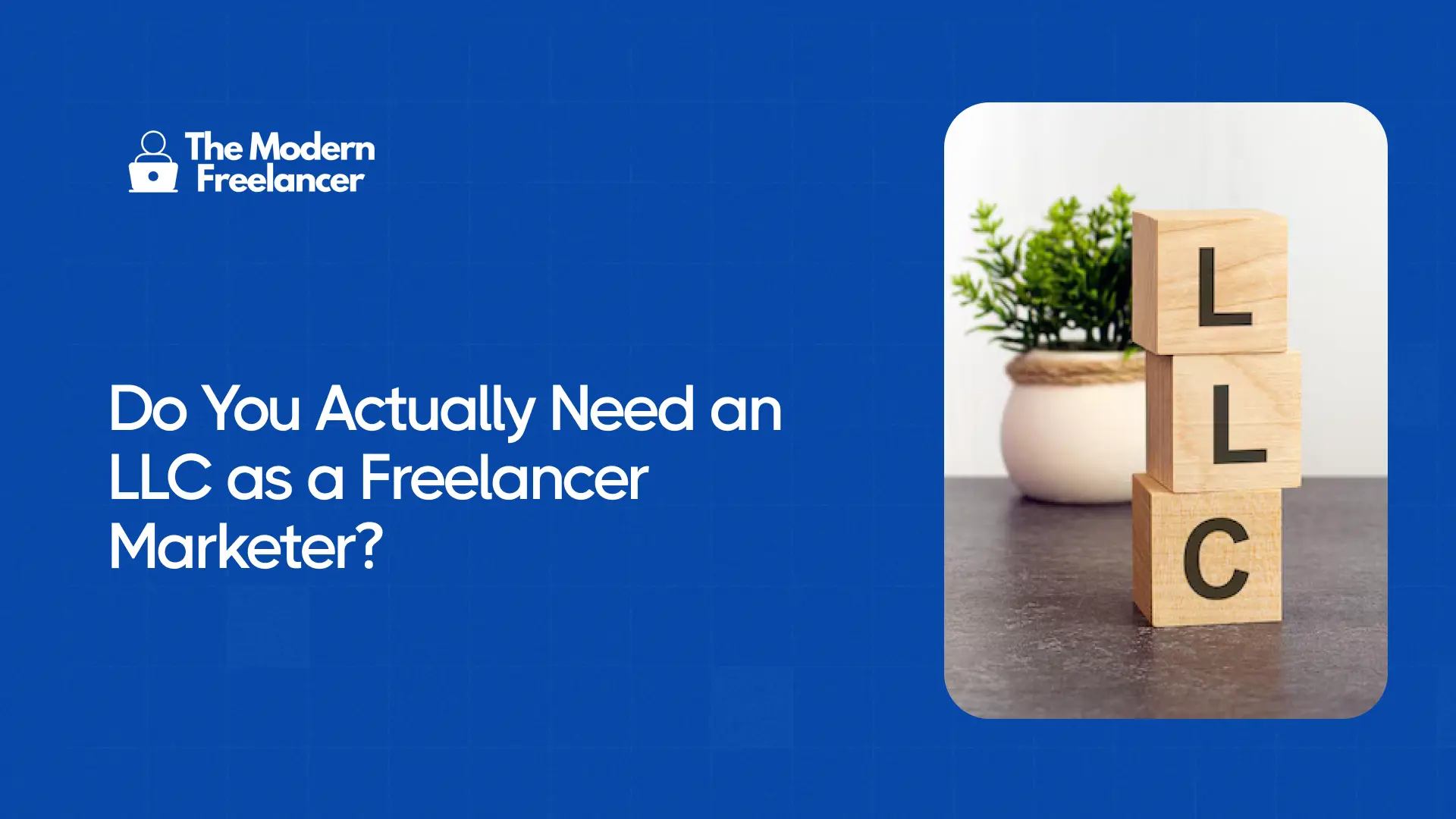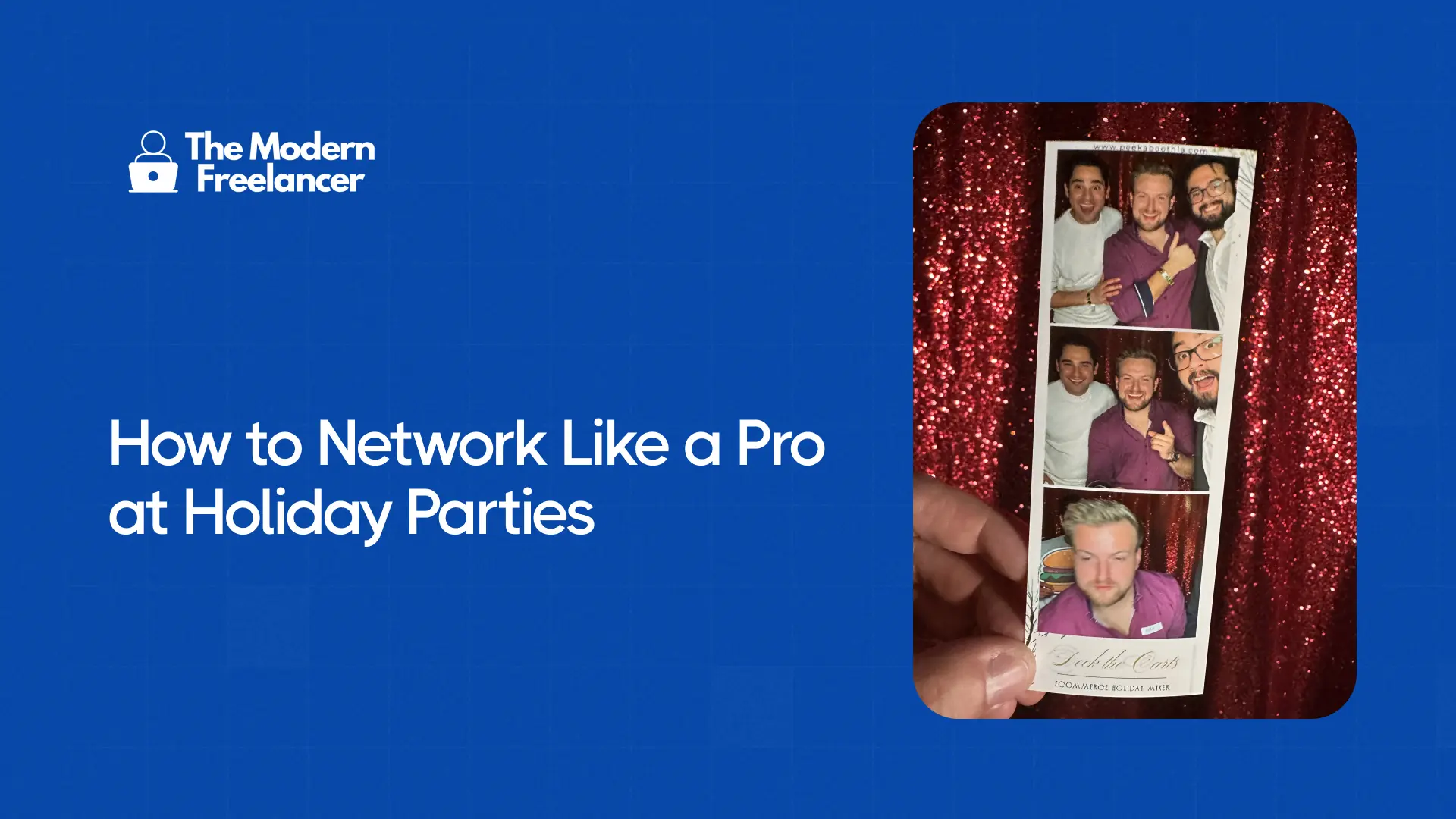How to Deal with Difficult Clients: 3 Red Flags to Avoid
Learn how to deal with difficult clients and spot red flags early. Master how to handle challenging clients and protect your freelance business.

Heads up: Some of the links below are affiliate links, which means I may earn a small commission if you choose to use them — at no extra cost to you. I only recommend tools I personally use and trust.
A few years ago, I took on a client despite my gut telling me not to.
The retainer was solid. The client seemed nice enough on our first call. But something felt... off.
You know that feeling, right?
Maybe it was how they dismissed my questions about profitability, or how they mentioned their last three marketers "just didn't work out." Instead of listening to that inner voice, I saw the dollar signs and said yes.
What followed was four months of a client who was never happy, was sending midnight Slacks and was borderline disrespectful on live calls.
By the end, my hourly rate had dropped below minimum wage, and I was dreading every Slack notification. That experience taught me an expensive lesson: saying no to the wrong clients is just as important as landing the right ones.
But, how do you identify when to say no?
Let’s look at the 3 major types of red flags. Starting with the money talk - because that's where most nightmares begin.
3 Types of Red Flags You Can't Ignore
1. “Budget” Red Flags
"This is easy, it shouldn't cost much"
Translation: "I don't value your expertise or understand what goes into this work."
Here's the truth: Clients who say this are telling you they view your specialized skills as commodity work. They're buying your time, not your expertise. And they'll likely question every hour you bill.
The real problem isn't just the low budget - it's the mindset. These clients often end up being the most demanding, requiring endless explanations and revisions because they don't understand the complexity of what you do.
"We have more work coming"
The classic carrot-on-a-stick approach. I fell for this one early in my career, accepting a low-paying project because the client promised "ongoing work" and "bigger budgets" in the future.
Spoiler alert: That future rarely comes.
Quality clients don't need to promise future work - they pay fair rates now. If they truly have more work coming, they'll prove it by paying you properly for the current project.
"Other freelancers charge less"
My favorite response to this: "You're right - and they're welcome to work with those freelancers."
This red flag helps you identify clients who treat creative partnerships like a price race. They’ll never respect the relationship or contribute to sustainable client retention.
It is actually doing you a favor by showing you exactly who you're dealing with: someone who shops for expertise the way they shop for commodities. These clients will never value the strategic thinking and experience you bring to the table.
When you hear these budget-related red flags, here's your script:
"I understand you're working with a specific budget. However, I've found that projects at this rate often lead to compromised results and frustration on both sides. I'd be happy to recommend some alternatives that might better fit your budget."
Next, we'll dive into the communication red flags that spell trouble…
2. “Communication” Red Flags
A. Unclear or Changing Requirements
I recently had a prospect send me this gem: "We need some marketing stuff done. You know, the usual." When I asked for specifics, they replied, "Let's just start and figure it out as we go."
Run.
Clear projects have clear objectives. While some flexibility is normal, clients who can't articulate what they want will struggle to recognize when they've got it. This leads to endless revisions and scope creep.
B. Late-Night Messages with URGENT Tags
Got a potential client sending you "URGENT" messages at 11 PM on a Saturday? Pay attention. This behavior rarely improves after you sign the contract.
These clients often lack boundaries and expect 24/7 availability. Remember: Poor planning on their part doesn't constitute an emergency on yours.
C. The Multiple Decision-Maker Maze
"Just run everything by me, Sarah in design, John in sales, the CEO, and our investor's nephew who took a marketing class once."
When a prospect mentions multiple stakeholders without a clear decision-making hierarchy, you're looking at feedback loops from hell. Each person will have conflicting opinions, and you'll end up with a project that never ends.
D. Poor Initial Communication
Watch how they handle the basics:
- Do they miss scheduled calls without notice?
- Are their emails vague or filled with typos?
- Do they take days to respond, then expect immediate replies?
These patterns only intensify once money's involved.
Next up: Let's talk about those respect-related red flags that scream "difficult client ahead"...
3. “Respect” Red Flags
A. Refusing to Sign Contracts
Contract resistance is a classic tell. When someone says, "Can't we just keep this casual?" they're really saying they want freedom to change their mind without consequences. Professional clients understand contracts protect both parties.
B. The Spec Work Trap
"Just show us a few designs/ideas first, then we'll discuss payment."
This is like asking a restaurant to cook you dinner before deciding if you want to pay for it. Spec work requests show a fundamental misunderstanding (or worse, disrespect) of creative professional work.
Professional response: "I invest my best creative work in paid projects. Here's my portfolio showing similar work I've done for other clients."
C. Rush Requests Without Rush Fees
"We need this by Monday!" (It's Friday afternoon)
The real red flag isn't the urgency - it's the expectation that you'll drop everything without compensation. Quality clients understand that rush jobs disrupt your schedule and price accordingly.
D. The "Just Polish This Up" Scenario
"We did most of the work, we just need you to polish it."
This seemingly innocent request usually hides a mountain of problems. In my experience, "polishing" often means "completely rebuilding from scratch" - but they'll expect to pay for a quick touch-up.
E. The Previous Freelancer Horror Story
"Our last three freelancers were terrible..."
Stop right there. If someone's had multiple bad experiences with freelancers, they're either:
- Terrible at choosing freelancers (poor judgment)
- Terrible at managing relationships (poor communication)
- The actual problem (poor client)
None of these scenarios end well for you.
F. Your Gut Feeling
"Something just feels off..."
This is perhaps the most important red flag of all. That uneasy feeling in your stomach during the initial consultation? It's your experience talking. Listen to it.
Remember: Every time you say yes to a problem client, you're saying no to the ideal client who might come along tomorrow.
Next up: Let's talk about the psychology of saying no, and why it's so hard for freelancers to turn down work (even when we know we should)...
Identifying Difficult Clients: Example
Let me give you a real-world story. A freelance designer I know once took on what looked like a dream client: high budget, big-name brand, exciting project. Within two weeks, the client started demanding multiple daily updates, contradicting their own feedback, and casually insulting her creative direction on calls.
By week three, she was spending 10 hours a week just managing their chaos (unpaid). When she finally walked away, she realized something powerful: difficult or challenging clients rarely start that way — they reveal themselves slowly. That’s why it’s so important to spot these behaviors early. If something feels off during onboarding, pay attention.
Best Strategies for Dealing With Difficult Clients in Marketing Business
Even with all the right filters, challenging clients sometimes slip through. So, when that happens, here’s how to protect your sanity and reputation.
Remain Calm
When emotions rise, logic falls. Don’t mirror their frustration and anchor the conversation in facts and outcomes. Take a breath before replying to that snarky Slack. Your composure communicates authority.
Listen Closely
Sometimes difficult clients just want to feel heard. Ask clarifying questions and paraphrase their concerns. It’s amazing how often tension diffuses when a client realizes you’re actually listening.
Reply Promptly
Silence breeds anxiety. Even if you can’t fix it immediately, acknowledge the issue and set a timeline. Responsiveness is key to trust, and trust is key to lasting client relationships.
Identify the Problem
Is it miscommunication? Unrealistic timelines? Misaligned goals? Before reacting, state the cause. Most conflicts with challenging clients come from unclear boundaries.
Suggest a Solution
Don’t highlight issues, but offer fixes. Reframe the problem around shared goals: “We both want this launch to succeed, here’s how we can make that happen.” Solutions shift the tone to collaboration.
The Power of No with Challenging Clients
So how do you avoid these situations?
By building what I call “The Power of No":
Create a 3-6 month financial buffer, track the real costs of difficult clients, and start setting small boundaries. And always trust your gut feeling.
The real cost of a problem client isn't just the reduced rate or scope creep - it's the opportunities you miss while dealing with their chaos. And all the extra stress that comes with it.
There’s plenty of good clients out there. They value expertise, respect boundaries, pay on time, and refer other good clients. But you won't find them if you're buried in bad projects.
Your time and sanity are worth more than any problem client's budget.
So the next time you spot these red flags, trust your instincts and learn how to say no. Your future self will thank you.



